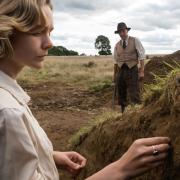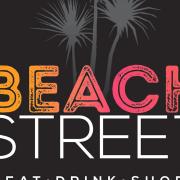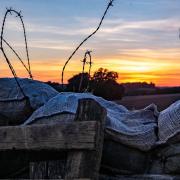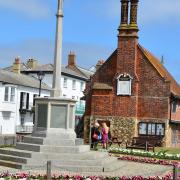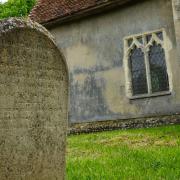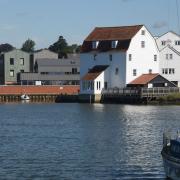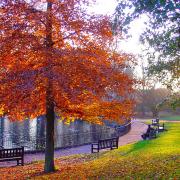Since taking up residence in the coastal village, Jan Etherington has plunged into local life . . . literally

As a visitor, all I really knew about Walberswick was that it is an attractive coastal village, encircled by the River Blyth, the marshes and the North Sea, with two great pubs – The Anchor and The Bell, a ferry across the Blyth to Southwold – and it’s a magnet for crabbers.
But now I live here, I’ve discovered there’s lots more to explore and enjoy, so that when I see visitors sitting on the green, admiring the silhouette of the black beach huts against the wide sky, I want to say ‘yes, it’s lovely but did you also know about …?’ .
Its Arts and Crafts houses, for instance, many of them the work of Frank Jennings (the legal wrangles of the Jennings family inspired Dickens’ Bleak House), a quirky architect, descended from King Canute with a mania for collecting and recycling ancient artefacts. He built a dozen houses here, in the early 20th century and restored many others.
There are three Jennings houses in Millfield Road. His own house, a sprawling masterpiece, then called Gazebo (now Te Awahou) and either side, Greyroof and Threeways.

Take a stroll down Leveretts Lane and admire the house he later built for his own family, the stunning thatched Marshway, and one next door, Whitebarn, for his brother, George.
Jennings was a ‘magpie’, picking up treasures. One day in 1908, while walking in Lavenham, he saw builders demolishing a mediaeval house. Enraged, he bought it on the spot, transported it to Walberswick by haywains and rebuilt the dramatic 15th century Mercer’s Hall on The Street.
While Jennings was house building, leading artists were arriving here, inspired by the seascape. Philip Wilson Steer, whose distinctive Girls Running on Walberswick Pier is now a postcard favourite, moved into Valley Farm, which is just beyond The Bell pub. Charles Rennie Mackintosh stayed there and also spent some time in Millside, a semi-detached house on The Street, during the early days of the First World War.
He was working on his botanical watercolours, but an unfortunate incident, in which curious locals noticed him fiddling with an outside lamp and taking long nocturnal walks along the beach, saw him accused of being a spy. His strong Glaswegian accent didn’t help his cause and although he was released, his love affair with Walberswick was over.

Visitors who wonder if they’re seeing double, are right. Walberswick has two village signs.
The original was erected on the edge of the village in 1953, but was stolen in 1984. A replica replaced it on the village green, but in 2012 a couple who had, unwittingly, bought the original in the 1990s contacted the village website and donated it back to the village in time for an unveiling, during the Queen’s Diamond Jubilee.
It was decided to place the old sign opposite St Andrew’s Church, but you may not have noticed it, because your eye is drawn to another wonder, the spectacular ruins of the old church, which frame the existing building.
Fascinating stories and people are still making history here. Passers-by wonder ‘Who was Wally Webb?’ as they spot the many blue plaques on village houses, bearing the inscription ‘Wally Webb, builder of Walberswick, worked here’.

Wally Webb died in 2012 and was a much loved Walberswickian. He helped to launch the annual crabbing competition, which became such a runaway success that it swamped the village and is no longer an organised event. But crabbers still gather on the wooden bridge by the harbour which was formally re-named and inscribed ‘Wally’s Bridge’ last year.
The wonderful Black Dog Deli is no longer a village secret. Word has got out about their great coffee, home-made pies, salads, picnics for walkers and most addictively, beer and treacle bacon baguettes, and it has just celebrated an extremely successful first year.
George Brentnall, who grew up here, and his partner, Isabel Simmonds, both trained as a chefs. George even worked for the Royal Household and they have made the Black Dog a very popular meeting place, for villagers, visitors – and swimmers.
Walberswick’s early morning swimmers – I’m one of them! – are in the sea by 7.30 in the morning, all year round and many wonder aloud if we’re completely mad.
Sometimes we return to the beach, as darkness falls, to star gaze. Walberswick has no street lights and on a clear night, the stars arc over the village like a sparkling canopy.
Quite wonderful. That’s Walberswick.
DVD : Frank Jennings – Architect and Magpie by Bill Ungless is available from Tinkers on the Village Green at Walberswick, £5 (all profits to charity).
Lots more on the village website: www.walberswick.onesuffolk.net




